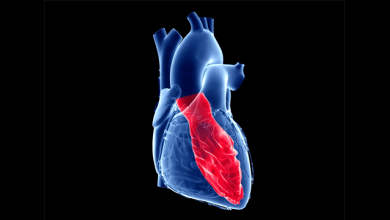Search results
Author(s):
Shohreh Honarbakhsh
,
Simon Sporton
,
Christopher Monkhouse
,
et al
Added:
2 years ago
Author(s):
Hongwu Chen
,
Kit Chan
,
Sunny S Po
,
et al
Added:
3 years ago
Ventricular tachycardia (VT) originating from the Purkinje system is the most common type of idiopathic left ventricular tachycardia (ILVT), especially among young Asians.1,2 It usually has a benign course. Research over the past two decades has deepened our understanding of the anatomy of the Purkinje system and the mechanisms of ILVT. This review focuses on the research history and anatomy of…
View more
Author(s):
Angela Hall
,
Andrew RJ Mitchell
Added:
3 years ago
AF is the most common clinical arrhythmia, affecting at least 1–2% of the population.1,2 Its prevalence increases with age, with 5% of people aged over 65 years developing AF, climbing to 8% in those aged over 75 years.3 AF is associated with increased morbidity and mortality and has significant public health implications.4 Patients presenting with new onset AF to emergency departments can be…
View more
Author(s):
Josep Brugada
,
Roberto Keegan
Added:
3 years ago
The best clinical approach to managing asymptomatic patients with ventricular pre-excitation has yet to be established. The clinical benefit of identifying and treating asymptomatic patients at risk of sudden cardiac death (SCD) has been debated since catheter ablation became effective and safe for the treatment of accessory pathways (APs). Data supporting current recommendations are mostly…
View more
Author(s):
Eyal Nof
,
William G Stevenson
,
Roy John
Added:
3 years ago
Sustained ventricular tachycardia (VT) and ventricular fibrillation (VF) are typically a manifestation of significant structural heart disease and often associated with a high risk of sudden cardiac death. Implantable cardioverter defibrillators (ICDs) remain the mainstay of therapy for prevention of sudden cardiac death associated with these arrhythmias.1 However, ICDs treat the arrhythmia after…
View more
Author(s):
Ling Zhang
,
Yuemei Hou
,
Sunny S Po
Added:
3 years ago
Atrial fibrillation(AF) is the most frequently encountered arrhythmia in clinical practice and has become an emerging epidemic. AF is associated with increased cardiovascular mortality and morbidy such as stroke.1–3 Over 2.3 million people in the US are affected by AF: it is estimated that AF will affect more than 15 million Americans by 2050.3 The traditional risk factors implicated in the…
View more
Author(s):
Federico Lombardi
Added:
3 years ago
Atrial fibrillation (AF) is the most common clinical arrhythmia with a relevant socio-economic impact.1–3 Patients with atrial fibrillation are characterised by symptoms such as palpitations and shortness of breath; they have reduced exercise capacity and are subject to a higher risk of thromboembolic events. In spite of a relatively simple diagnosis, management of AF patients is difficult for…
View more
Author(s):
A John Camm
Added:
3 years ago
Atrial fibrillation (AF) is the most common sustained cardiac arrhythmia, occurring in 1–2 % of the general population and is increasingly prevalent in older people, occurring in about 10 % of over 80 year olds.1 AF is associated with a variety of cardiovascular conditions. The arrhythmia is associated with a five-fold rise in stroke risk and frequently coexists with heart failure, both leading…
View more
Author(s):
Alessio Galli
,
Francesco Ambrosini
,
Federico Lombardi
Added:
3 years ago
Since the 1960s, Holter monitoring has been a cornerstone for diagnosing suspected arrhythmias in patients of all ages.1 The most common monitoring systems allow the continuous registration of three or more leads for 24–48 hours; newer Holter monitors allow continuous electrocardiogram (ECG) registration for 2 weeks.1 Extending the time of ECG registration will increase the diagnostic yield of…
View more
Author(s):
Francisco G Cosio
Added:
3 years ago
The term ‘flutter’ was coined to designate the visual and tactile rapid, regular atrial contraction induced by faradic stimulation in animal hearts, in contrast with irregular, vermiform contraction in atrial fibrillation (AF).1,2 On the ECG, flutter was a regular continuous undulation between QRS complexes at a cycle length (CL) of ≤250 ms (≥240 bpm). Slower tachycardias displaying discrete P…
View more













 « First
« First